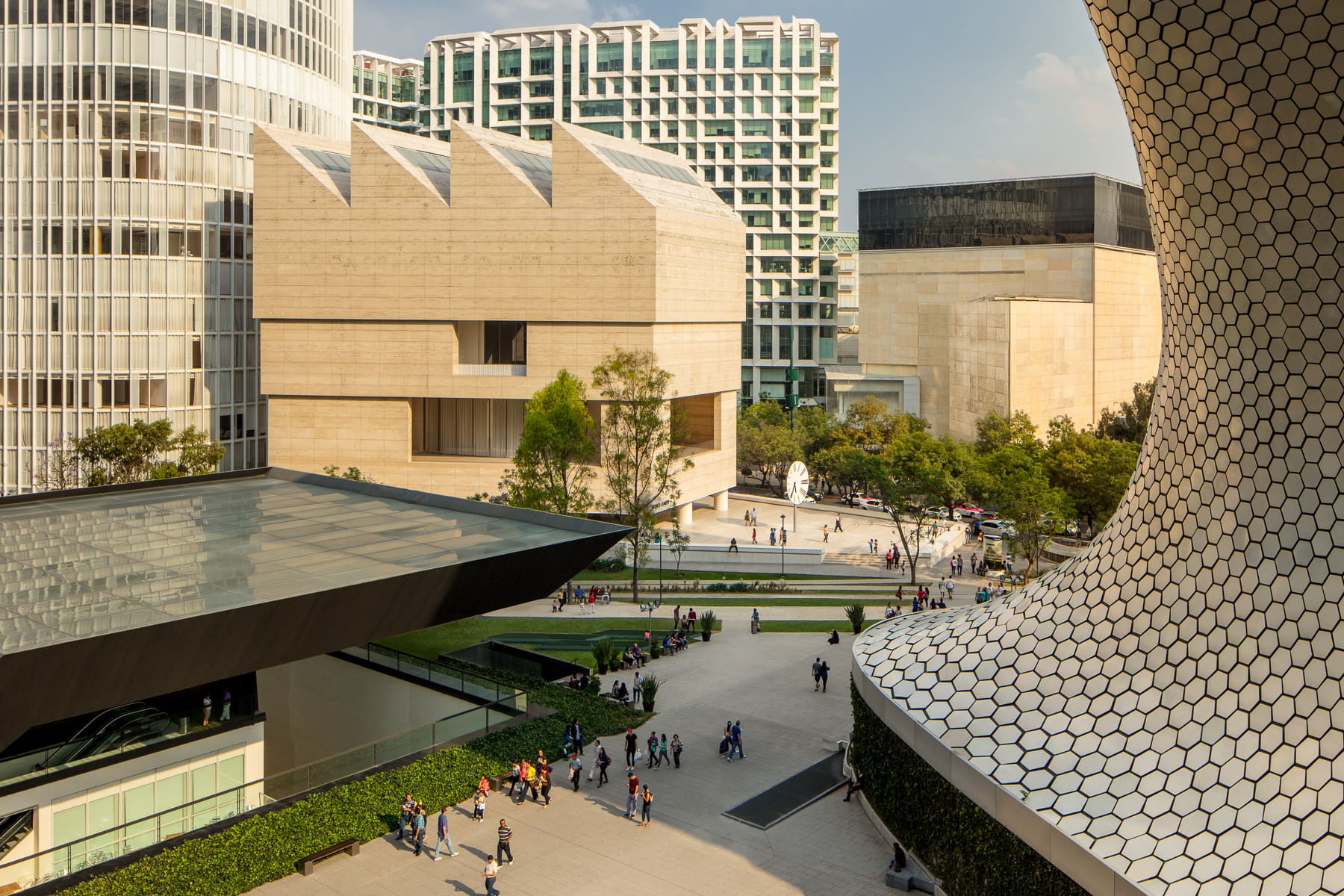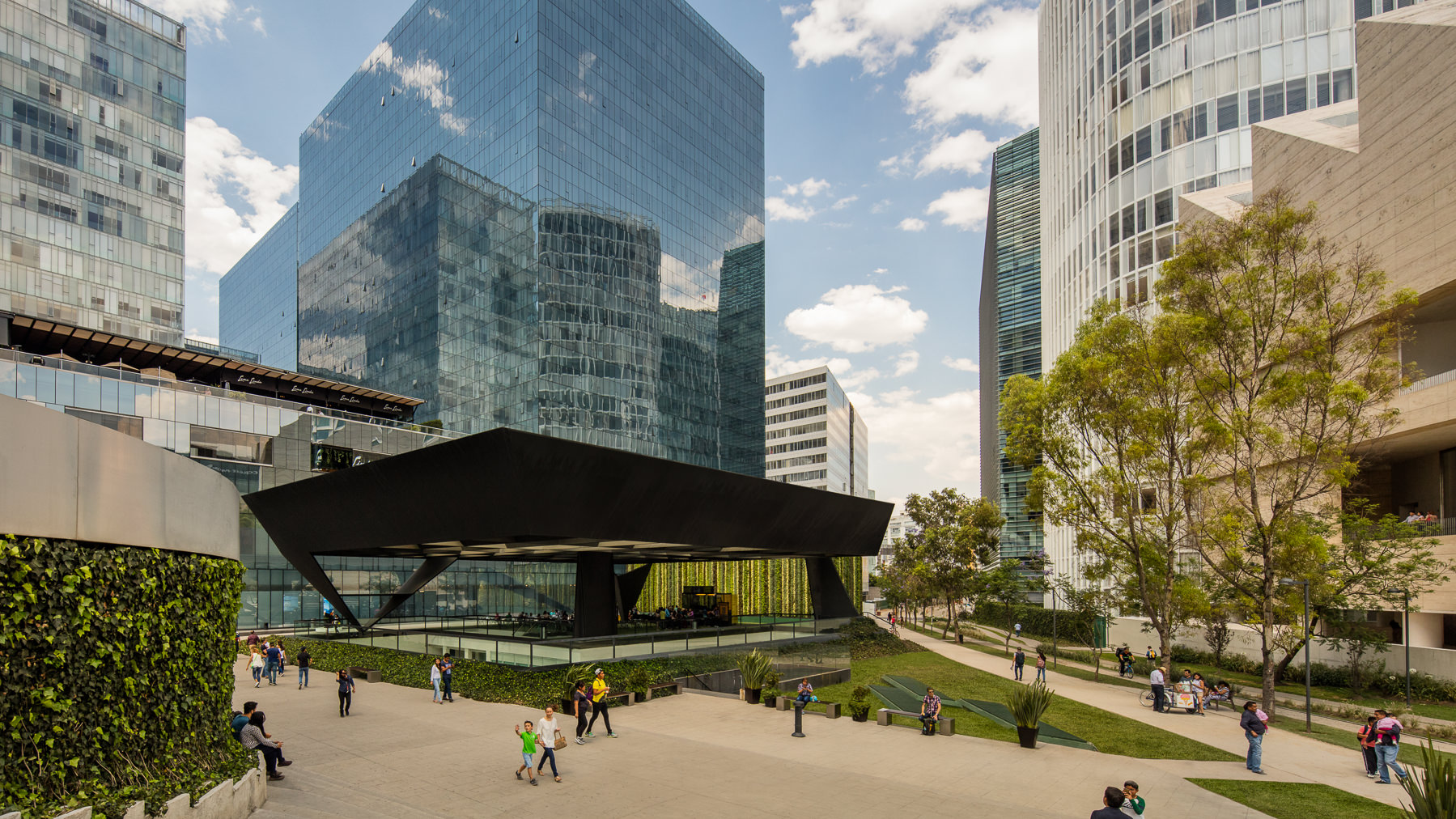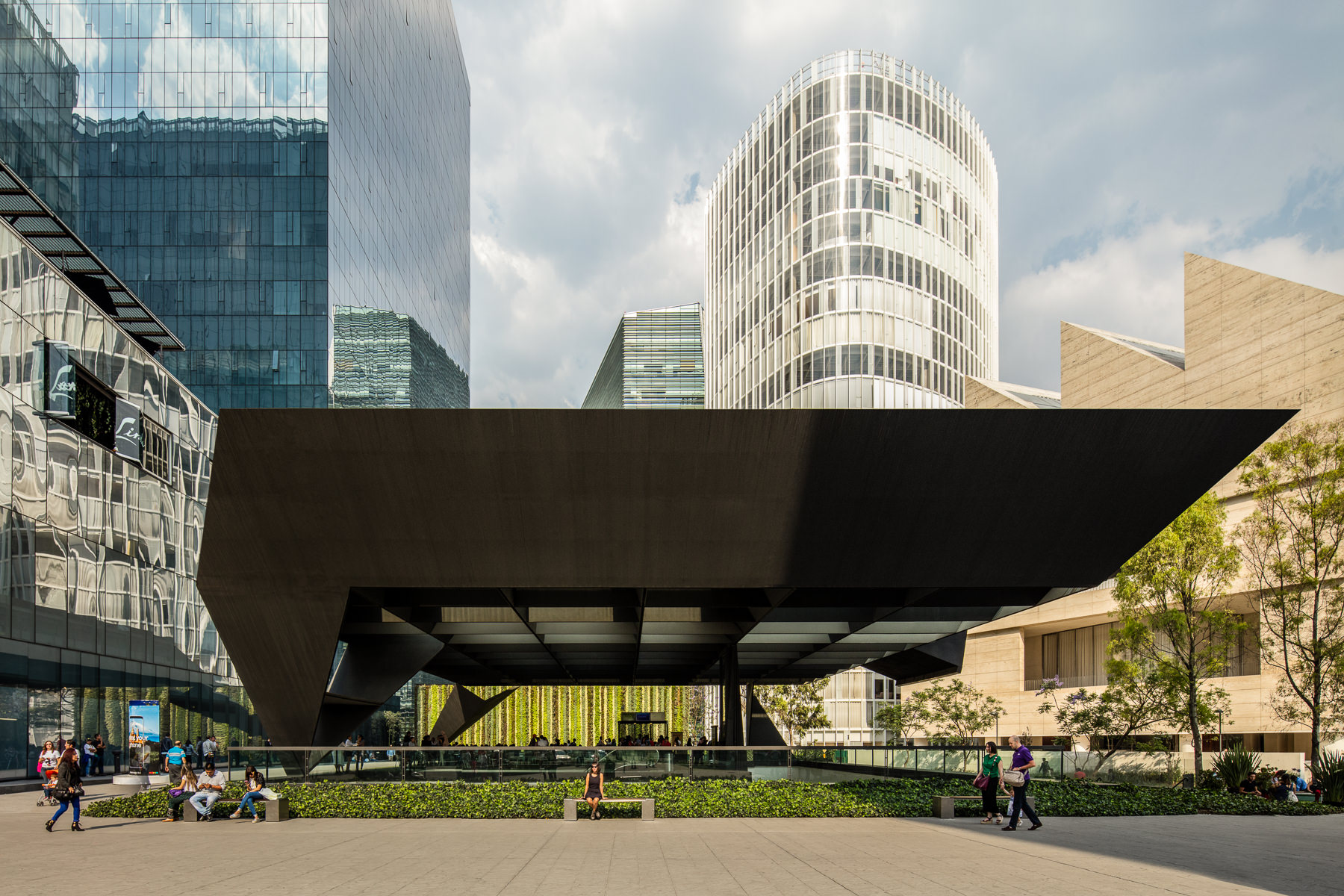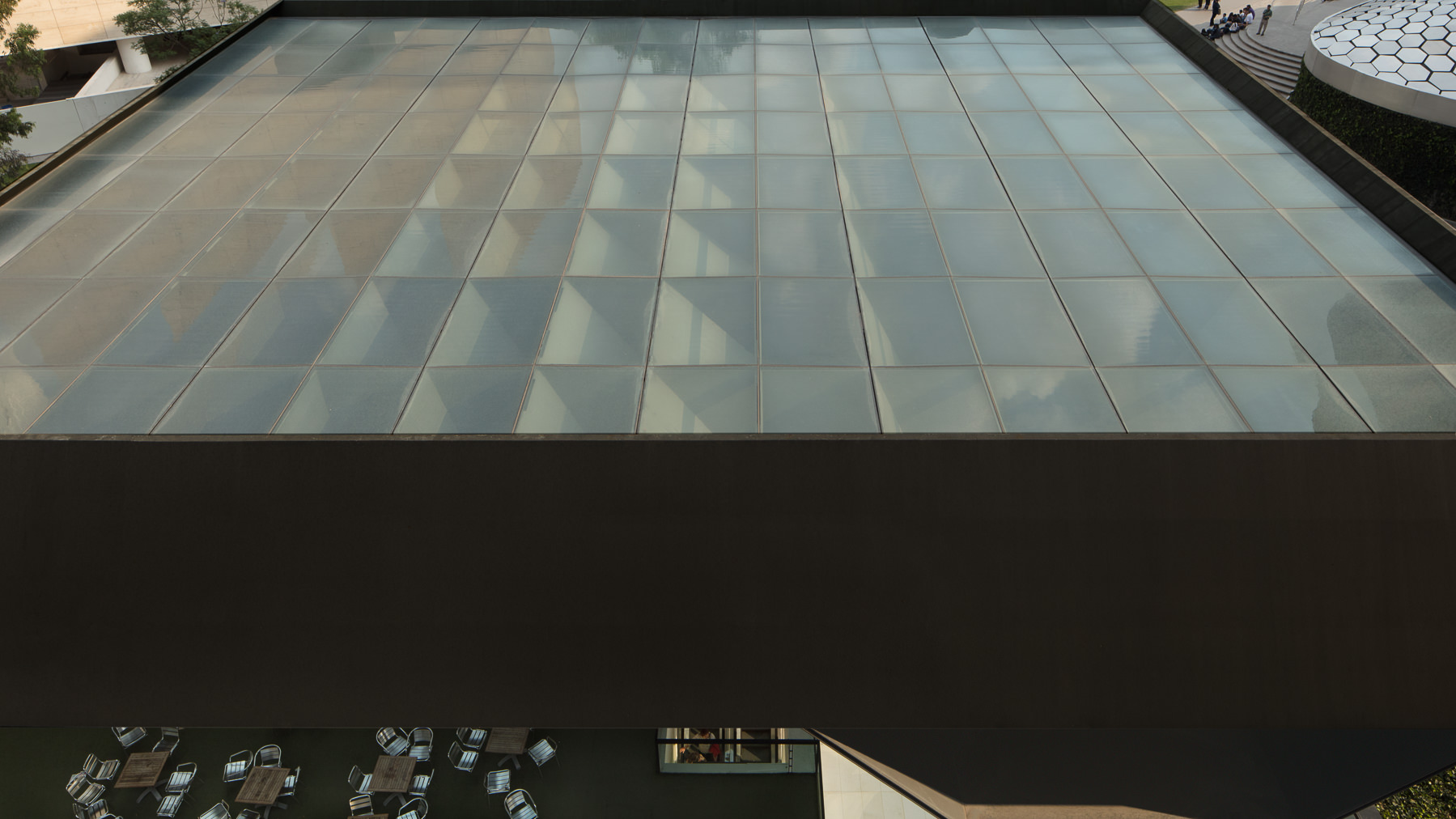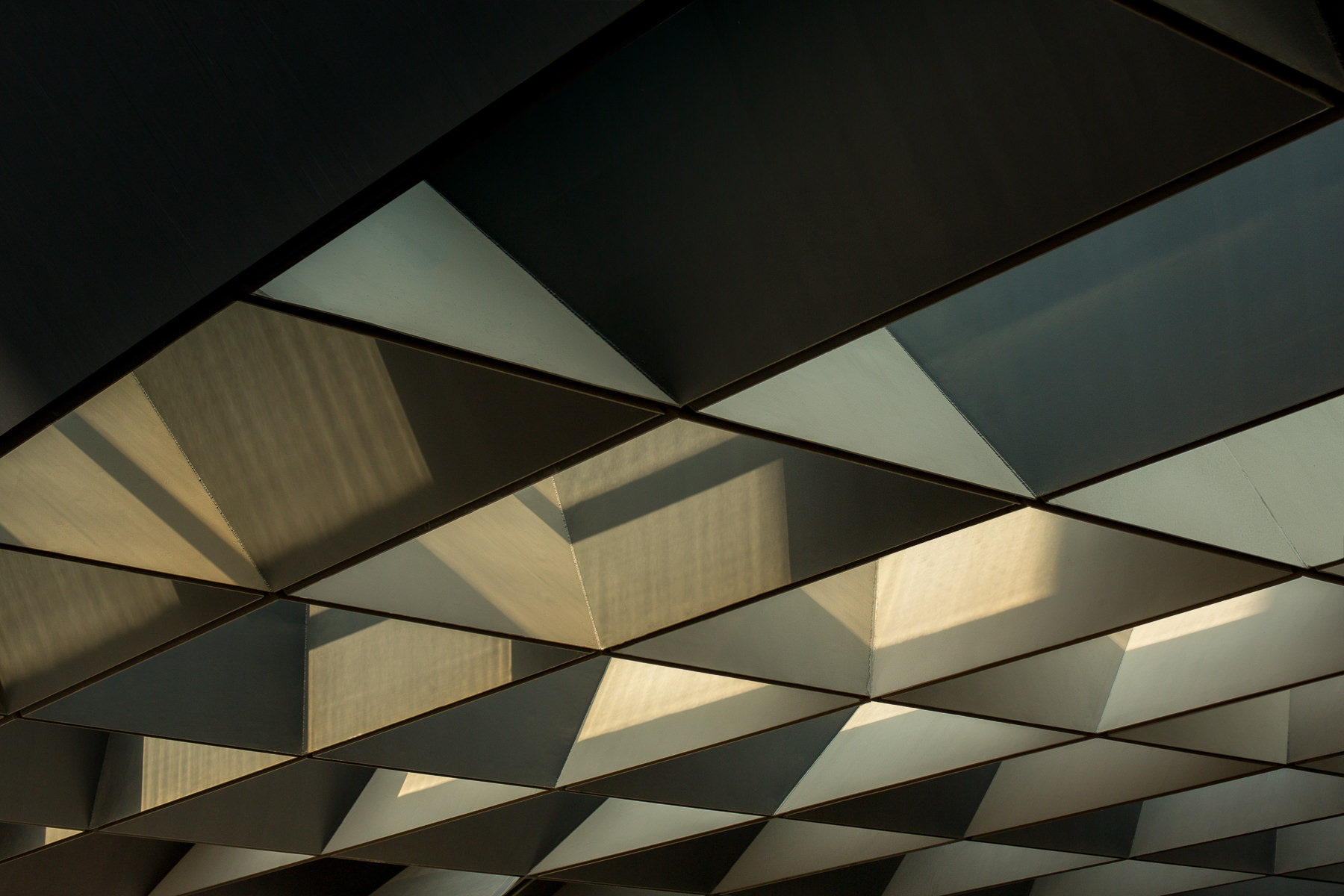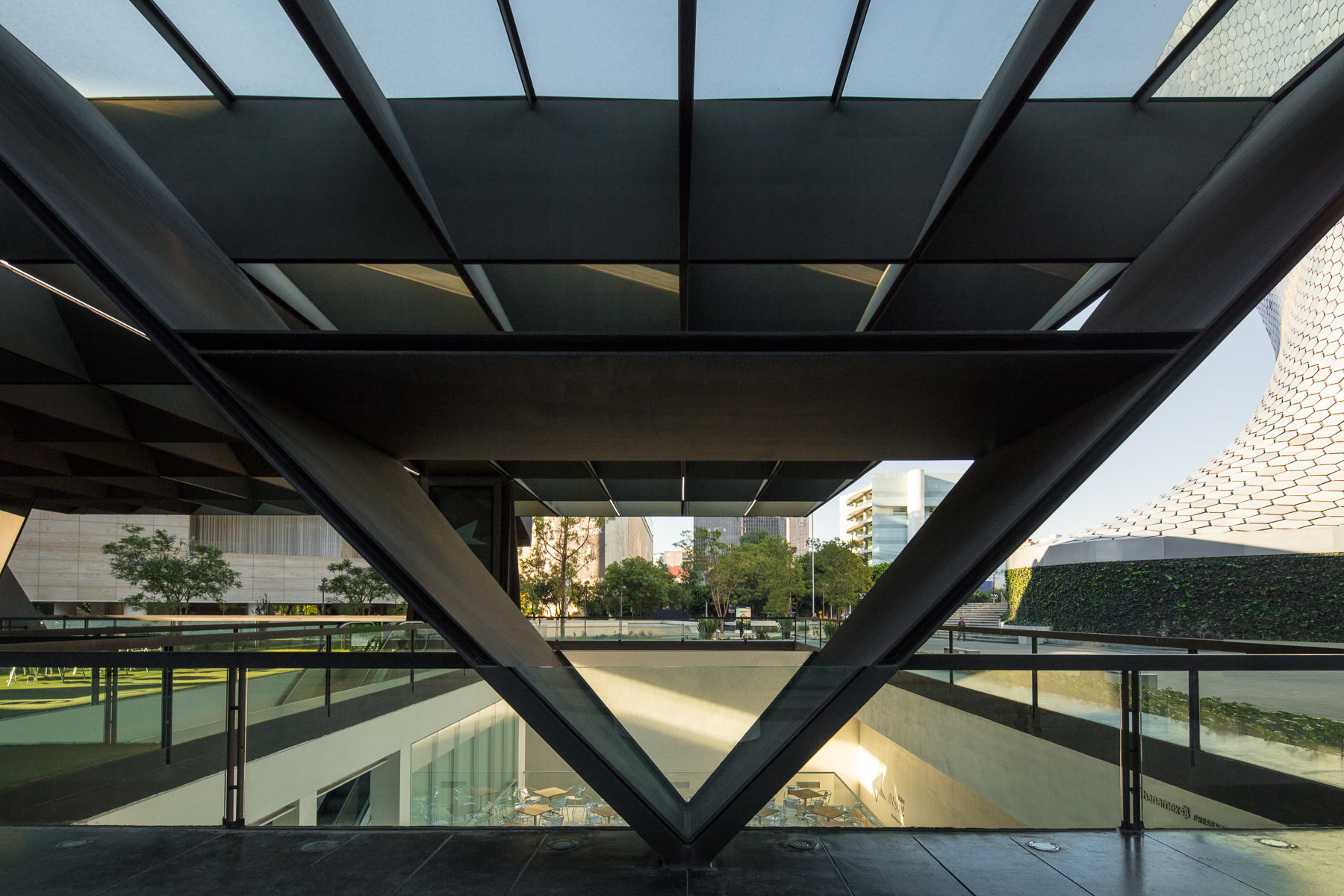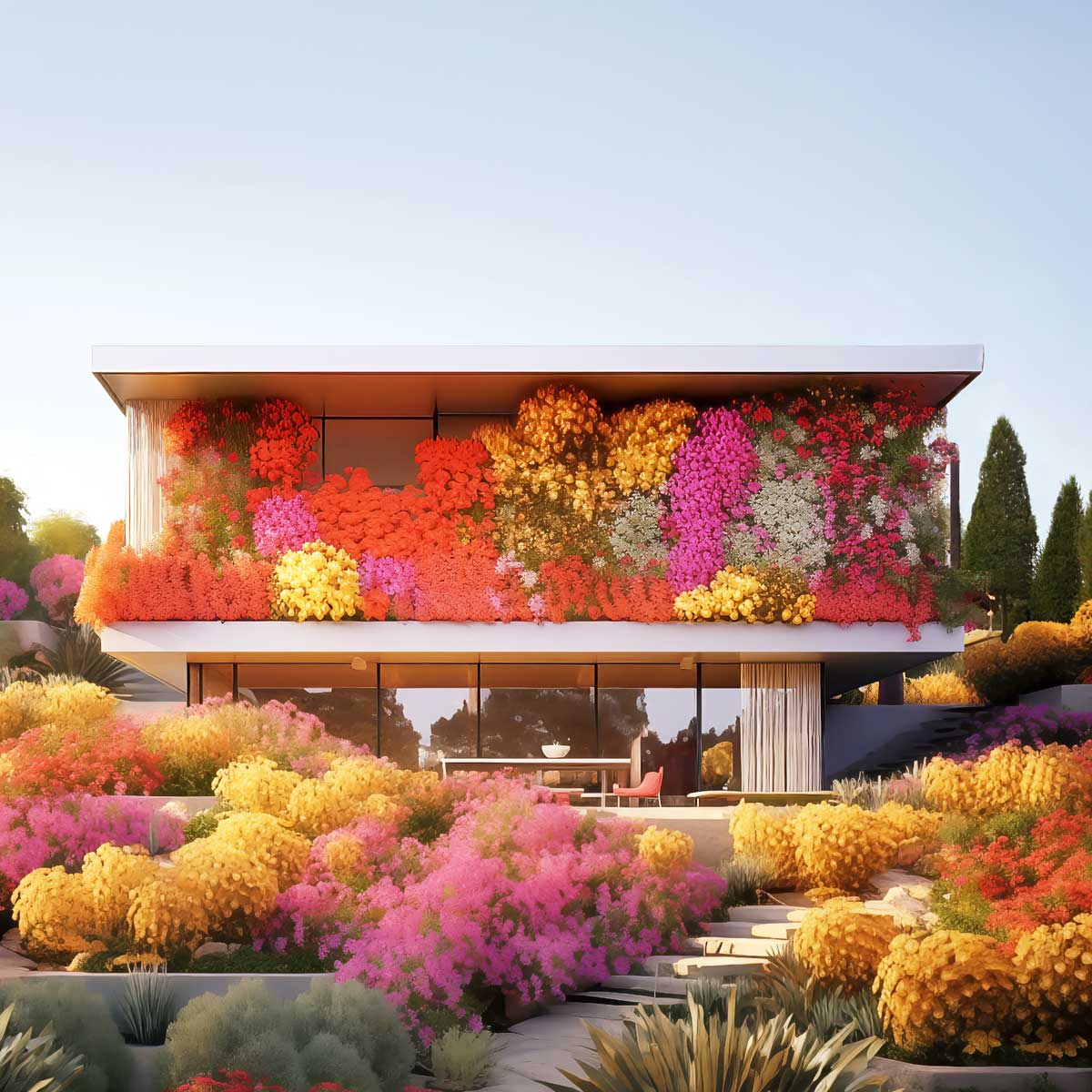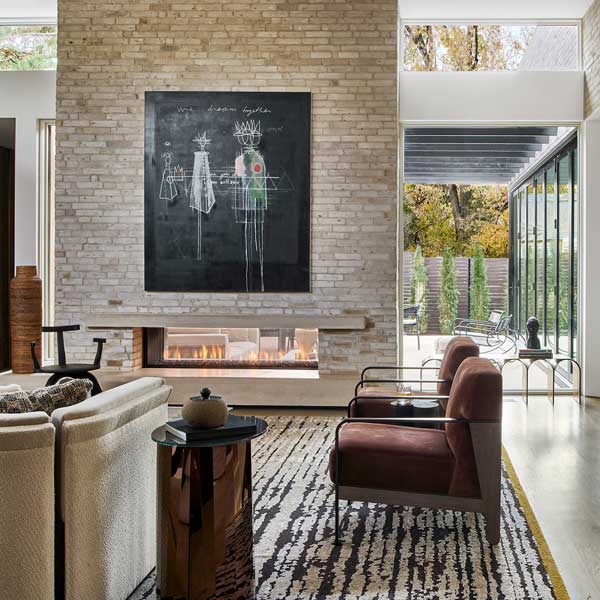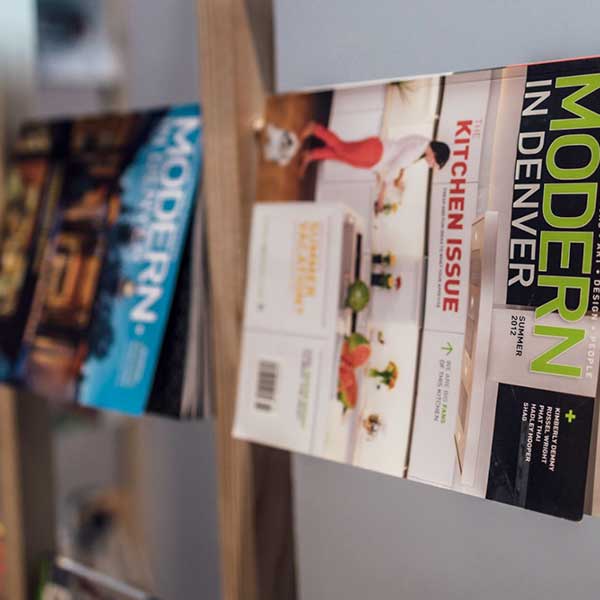Words: Caroline Joan Peixoto | Images: James Florio
Built in 2012 and designed by Elena Perez and Alba Cortes of Madrid-based ensemble studio, Teatro Cervantes is a theater notable for its large metallic structure opening up into the public square of Plaza Carso, a park in the Polanco district of Mexico City. Located right next to the ever-impressive Museo Soumaya and Jumex, Cervantes stands its own ground thanks to this attention-drawing, abstract black metal rooftop structure dubbed the “dovela.”
With the actual theatre underground, it is this angular rooftop, stemming up from the ground that draws attention to the space. Its monolithic presence is reminiscent of Aztec folklore: the Dovela, or sun stone, represents the continuity of solar time as it passes through. This architectural marvel seemingly defies gravity; appearing to float via its abstract balance, the dovela makes a statement for the theater hidden below as it filters rays of sunlight through to lure people inside.
“Architecture refers to the intangible constantly. However, it does so using elements of imposing physicality,” writes ensamble founder Antón García-Abril describing the structure for Archdaily. “We understand contemporary culture as a constant expression of connectivity with the movements of time, and the layers of history that overlap and hybridize the Mexican culture are of great inspiration to make a work of architecture today.”
